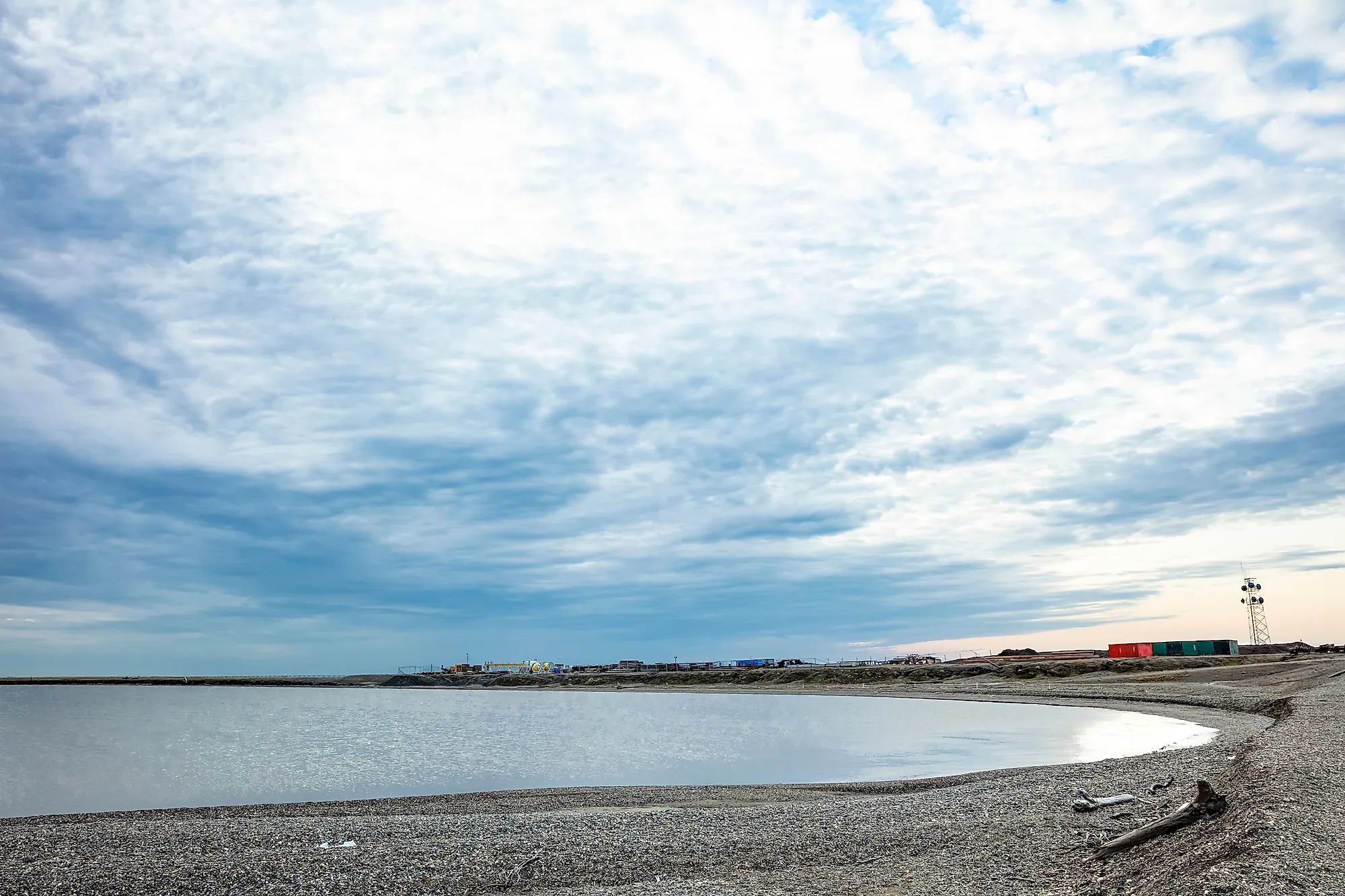
Prudhoe Bay
Prudhoe Bay is an inlet of the Arctic Ocean located on the northern coast of the US State of Alaska between the North Slope Borough and the Beaufort Sea. The bay is the site of North America’s largest oil field that originally contained approximately four billion cubic meters of oil. Named in 1828, the bay and the surrounding areas were developed extensively for oil exploration and drilling in the 1970s. The bay is linked to the Valdez port by the 1,288-kilometer long Trans-Alaska Pipeline that transports crude oil to the Prince William Sound, Pacific Ocean. Much of the bay area and North Slope experience Arctic climate, characterized by severe weather, especially during winter.
Location Of Prudhoe Bay
Prudhoe Bay is both a settlement area and a bay on the northern coast of the US state of Alaska. It is an extension of the Beaufort Sea, a marginal sea of the Arctic Ocean, located in the North Slope Borough, approximately 320 kilometers southeast of Point Barrow; 400 kilometers north of the Arctic Circle; and east of Alpine. The bay indents the Alaskan northern coast between the Arctic National Wildlife Refuge (ANWR) and the National Petroleum Reserve-Alaska (NPRA). The North Pole is located about 1,900 kilometers north of Prudhoe Bay. The bay itself is located just 12.5 kilometers from Prudhoe Bay census-designated place.
Geography
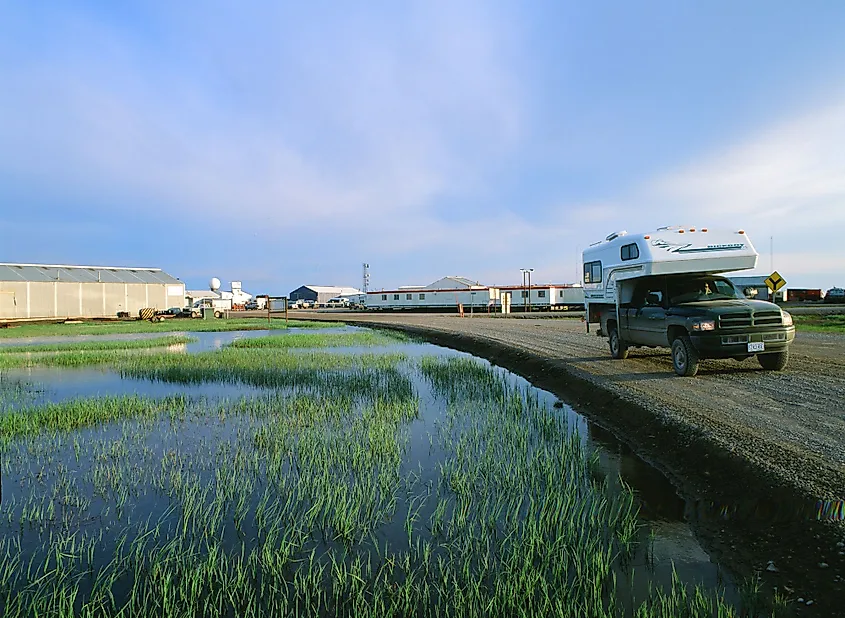
Prudhoe Bay is one of the northernmost bays in North America. Geographically, the bay is located on the southern coast of the Beaufort Sea and west of Mackenzie Bay. Prudhoe Bay and the entire North Slope of Alaska experience Arctic climate, with long and frigid winters. The region’s location above the Arctic Circle means that the sun disappears for several weeks during the winter season. Summers are generally cool, with temperatures ranging between 7 and 13 degrees Celsius.
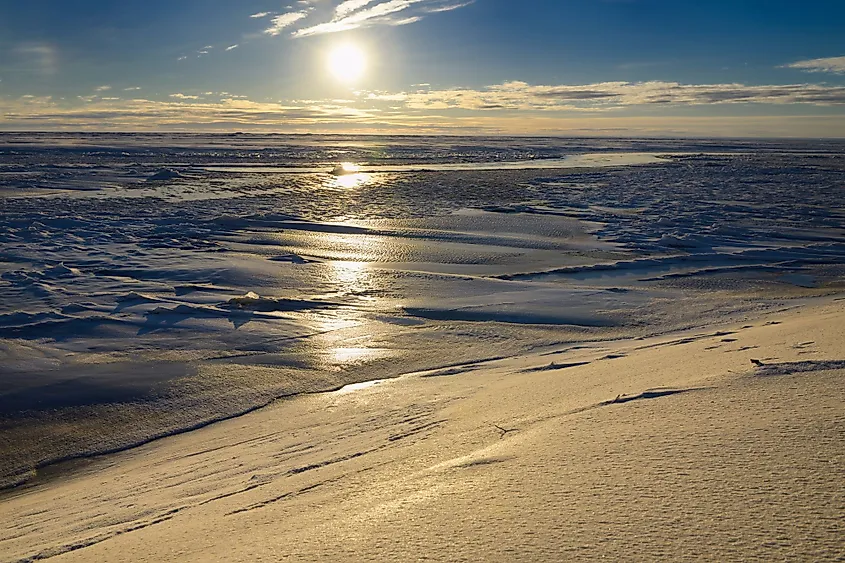
Prudhoe Bay and much of the Beaufort Sea remains frozen for most of the year due to the cold Arctic climate. However, the ice breaks away in August and September near the coast. The surface water up to a depth of 100 meters has a temperature of -1.4 to -1.8 degrees Celsius. The bay’s water has a lower saline level (2.8%) than the sea waters on the north (3.2% saline) due to the freshwater rivers draining into the bay and sea. These rivers include Sag, Kadleroshilik, and Kuparuk Rivers.
Wildlife In Prudhoe Bay
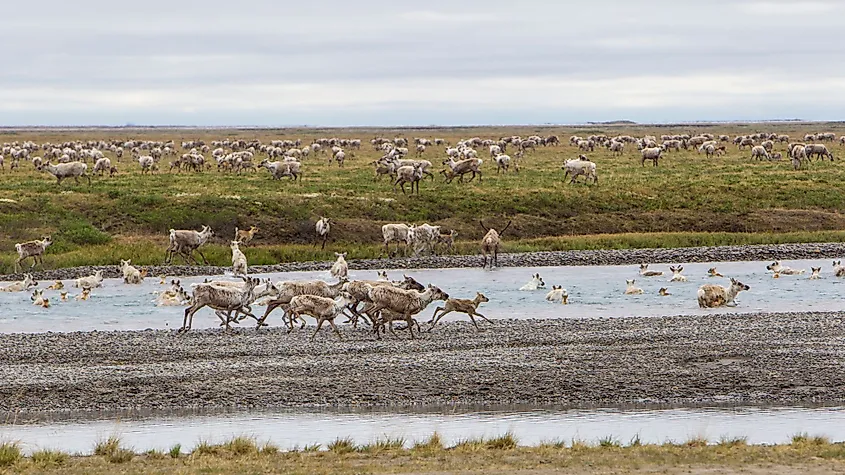
Prudhoe Bay and the surrounding waters host diverse flora and fauna, including several zooplankton and phytoplankton species. The faunal species that inhabit the bay’s bottom include more than 500 species of mollusk, crustaceans, bryozoans, and polychaetes. Important fish species that frequent the bay include saffron cod, Arctic cod, inconnu, Arctic cisco, Arctic char, and polar char, among other species. The beluga whales can be spotted in the coastal areas during the summer months (between August and September) when the region is free of ice. The coastal land areas also host several species, including seabirds, brown bears, polar bears, Arctic hares, musk ox, Arctic ground squirrels, seagulls, and caribou.
Economic Significance Of Prudhoe Bay
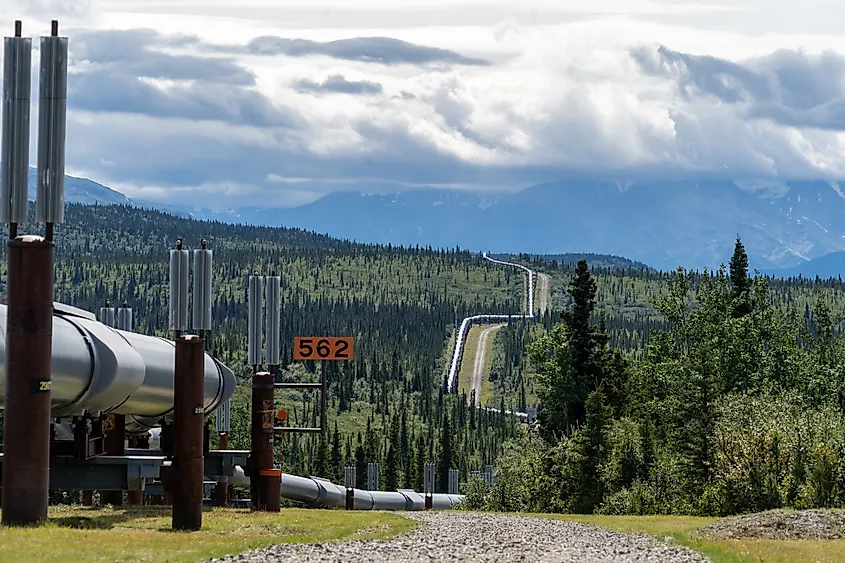
Natural gas and oil reserves have been discovered in Prudhoe Bay and other parts of the Beaufort Sea. The region was identified for oil exploration in the 1960s and was part of the land allocated to Alaska at the time of statehood. After several years of digging, a rig containing natural gas was discovered in December 1967. Oil production at Prudhoe started in June 1977 and peaked in 1988, with a daily production of 240,000 cubic meters. The Prudhoe Bay Oil Field is North America’s largest oil field by acreage, covering about 864 square kilometers. The oil field was estimated to contain 4 billion cubic meters of oil and 46.5 billion cubic meters of natural gas. The current daily oil production at Prudhoe is 37,000 cubic meters. The oil is transported to Valdez via the Trans-Alaskan Pipeline system. The oil field is operated by BP Plc and its partners ConocoPhillips and ExxonMobil.











